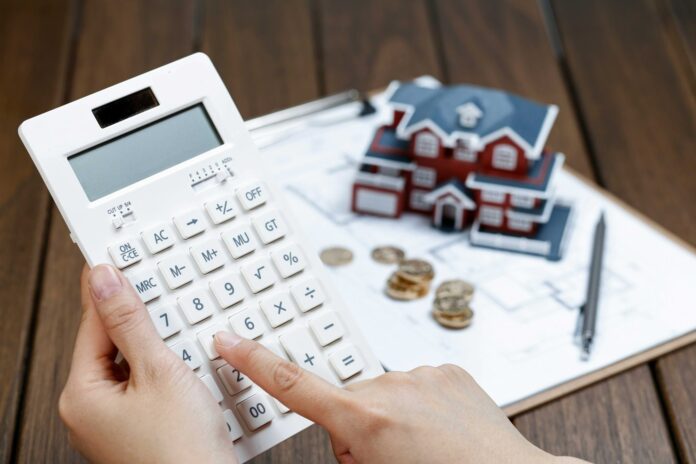[ad_1]

Key takeaways
Home prices hit another record with the combined capital house and unit prices experiencing another quarter of growth – a fifth consecutive rise for houses and a fourth for units.
Although price growth slowed compared to the previous quarter, Domain predicts home prices will continue to rise, driven by a chronic undersupply of new homes, strong population growth, high construction costs, and a tight rental market.
The latest Domain House Price report I discuss below gives all the details.
Australia’s home prices have set another record.
According to the latest Domain House Price Report, the combined capital house and unit prices experienced another quarter of growth — the fifth consecutive rise for houses and the fourth for units.
The report indicates that while the pace of price growth has slowed compared to the previous quarter, home price records continue to be broken, with further increases expected.
In fact, several home price records were broken during the first quarter of 2024, including:
- House prices in Sydney, Brisbane, Adelaide, and Perth are at another record high (Table 1);
- Brisbane, Adelaide, and Perth have record-high unit prices (Table 2).
- For the first time, Sydney house prices surpassed $1.6 million and Adelaide rose to over $900,000.
- Perth’s unit prices ($425,638) soared to a record high, surpassing the previous peak set a decade ago. This resulted from unit prices accelerating substantially after the city’s fastest quarterly gain in 5 years (at 8.1%) and 17-year-high annual gains (at 17.2%).
House price growth was slower during the March quarter compared to the previous quarter
Although price growth led to these new records, house price growth was slower during the March quarter compared to the previous quarter in Sydney, Melbourne, Brisbane, Adelaide, Perth, and Darwin.
Table 1. The current median house price and changes
| HOUSES | STRATIFIED MEDIAN PRICE | |||||||
| Capital City | Mar-24 | Dec-23 | Mar-23 | Quarterly
change |
Annual
change |
Price peak achieved | Price from
peak |
| Sydney | $1,627,625 | $1,594,582 | $1,465,323 | 2.1% | 11.1% | Mar-24 | 0.0% |
| Melbourne | $1,032,020 | $1,047,507 | $1,024,442 | -1.5% | 0.7% | Dec-21 | -5.6% |
| Brisbane | $924,498 | $909,713 | $821,546 | 1.6% | 12.5% | Mar-24 | 0.0% |
| Adelaide | $902,332 | $872,768 | $779,362 | 3.4% | 15.8% | Mar-24 | 0.0% |
| Canberra | $1,049,719 | $1,040,160 | $1,038,580 | 0.9% | 1.1% | Jun-22 | -10.8% |
| Perth | $777,921 | $766,787 | $667,337 | 1.5% | 16.6% | Mar-24 | 0.0% |
| Hobart | – | $712,648 | $701,197 | – | – | Mar-22 | – |
| Darwin | $573,856 | $628,020 | $562,942 | -8.6% | 1.9% | Dec-13 | -15.4% |
| Combined capitals | $1,112,575 | $1,101,849 | $1,022,031 | 1.0% | 8.9% | Mar-24 | 0.0% |
For units, Melbourne and Adelaide experienced slower quarterly growth.
Table 2. The current median unit price and changes
| UNITS | STRATIFIED MEDIAN PRICE | |||||||
| Capital City | Mar-24 | Dec-23 | Mar-23 | Quarterly
change |
Annual
change |
Price peak achieved | Price from
peak |
| Sydney | $806,137 | $791,025 | $760,047 | 1.9% | 6.1% | Dec-21 | -0.5% |
| Melbourne | $564,095 | $571,451 | $539,630 | -1.3% | 4.5% | Dec-21 | -6.4% |
| Brisbane | $549,704 | $526,072 | $469,391 | 4.5% | 17.1% | Mar-24 | 0.0% |
| Adelaide | $489,557 | $484,482 | $418,891 | 1.0% | 16.9% | Mar-24 | 0.0% |
| Canberra | $565,303 | $595,006 | $582,027 | -5.0% | -2.9% | Sep-23 | -9.7% |
| Perth | $425,638 | $393,715 | $363,112 | 8.1% | 17.2% | Mar-24 | 0.0% |
| Hobart | – | $519,219 | $540,787 | – | – | Sep-22 | – |
| Darwin | $387,509 | $366,352 | $343,498 | 5.8% | 12.8% | Mar-16 | -20.3% |
| Combined capitals | $637,578 | $633,725 | $598,423 | 0.6% | 6.5% | Mar-24 | 0.0% |
“The slowdown in growth observed during the March quarter is due to an increased supply of homes for sale across the combined capitals, with more properties now available in Sydney, Melbourne, Hobart, and Canberra”, said Domain’s Chief of Research and Economics, Dr Nicola Powell.
She said, however, that a reduction in the cash rate could shift this trend, potentially increasing housing turnover.
Meanwhile, Perth and Brisbane have experienced a long-term decrease in the number of properties for sale, which has contributed to significant price growth in these cities.
Property prices are expected to continue rising
According to Dr Powell, despite the challenges of cost-of-living pressures and high interest rates, property prices are expected to continue rising.
She commented further:
“This upward trend is driven by various factors, including a chronic shortage of new homes, strong population growth, high building costs, and a tight rental market, all of which boost housing demand.
The shortage of new housing is likely to persist, as new dwelling approvals have dropped to a nearly 12-year low after trending downward over the past two years.
This ongoing scarcity will maintain pressure on our housing supply.”
Powell also noted that the challenging rental conditions will likely push some prospective first-time buyers to fast-track their journey toward homeownership.
It is expected to have an increased demand at the more affordable end of the market, particularly for units.
“This trend will likely affect affordable markets such as Perth, Brisbane, and Adelaide, along with units in higher-priced markets like Sydney,” said Dr Powell.
[ad_2]
Source link


